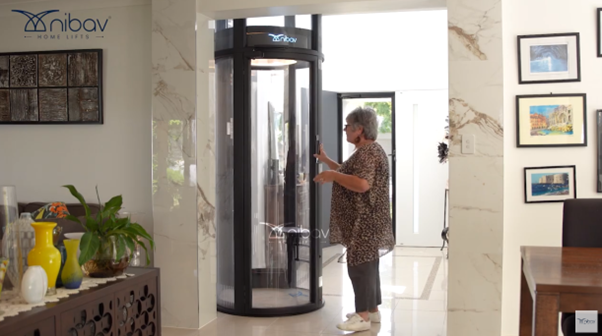When planning an elevator installation, it is critical to grasp the distinctions between high, the middle, and low-rise buildings elevators. Each type has been constructed to accommodate specific height limits and customer requirements. This comprehensive primer from Nibav Home Lifts will walk that you throughout the important distinctions and help you decide which option is ideal for the structure you have.
Overview to Elevator Types.
High-rise elevators
High-rise elevator are designed for buildings that are more than 12 floors tall. They are designed to travel over long distances quickly and comfortably.
Mid-rise elevators
Mid-rise elevator are ideal for complexes of 5 to 12 levels. They strike a mix between rapidity and effectiveness, providing to both residential and business buildings that do not need the advanced features of high-rise elevators.
Low-Rise Elevators
Low-rise elevators have been developed for structures up to four floors tall. They offer a cost-effective and practical option for smaller buildings, offering quick access and efficiency.
High-rise elevators
Functions & Advantages.
• High-rise elevators can achieve speeds of up to 500 meters per minute. They are intended to manage huge numbers of persons and heavy loads smoothly.
• Advanced Technology: These elevators use destination automation systems to group commuters with comparable destinations, reducing wait and transit times.
• High-rise elevators include improved ride comfort elements to ensure an effortless and enjoyable journey when traveling at elevated speeds.
Best Suitable For:
• Buildings such as sky and tall residential structures require significant vertical travel distances.
• Commercial facilities are ideal for high-traffic regions that require effectiveness and quickness.
• Luxury hotels offer exceptional amenities to enhance their overall desirability.
Mid-rise elevators
Features & Benefits.
• These residential elevators provide a balanced effectiveness in terms of speed and capacity, making them suitable for different building types.
• Cost-effective: Lower cost than condominiums elevators without sacrificing functionality or performance.
• Energy Efficiency: Conserving energy features can lower long-term running costs.
Best Suitable For:
• Suitable for medium-height condominium complexes and condominium buildings.
• Office Buildings: Ideal for medium-sized business buildings looking for a cost-effective solution without sacrificing performance.
• Mixed-Use Buildings: Ideal for constructions with residential, business, and commercial areas.
Low-Rise Elevators
Features & Benefits.
• Low-rise structures elevators are cost-effective to install and continue to making them suitable for modest budgets.
• The small footprint makes them ideal for buildings with limited elevator the shaft space.
• Easy to run and maintain, providing dependable service with limited downtime.
Best Suitable For:
• Small Residential Buildings: Suitable for single-family residences, the townhouses, and low-rise apartments.
• Small Office Buildings: Ideal for offices that have restricted floor space and cheap installation and operational costs.
• Healthcare Facilities: Ideal for small hospitals and health facilities, with simple access to multiple floors.
Choosing the Right Elevator for Your Building.
When picking an elevator, you must evaluate your construction’s individual needs, such as height, circulation of passengers, and budget. Here include a few important considerations to help you decide:
Building Height and Structure
• High-rise elevators must be present for effective vertical mobility in buildings exceeding 12 floors tall.
• Mid-rise elevators are ideal for facilities between 5 and 12 levels due to their cost-effectiveness and performance.
• For structures up to 4 floors, low-rise elevators are the most practical and cost-effective option.
Passenger Volume
• High-rise elevators have been developed to carry a large number of people rapidly and efficiently.
Mid-rise elevators are ideal for complexes with average passenger volume.
• Low-rise elevators are ideal for establishments with low traffic volumes.
Budget Considerations:
• High-rise elevators are often the most affordable due to their superior technology and features.
• Mid-rise elevators are typically less expensive than high-rise elevators, but still provide excellent performance.
• Low-Rise: A cost-effective alternative for those on a tight budget.
Conclusion
Recognizing the distinctions between high, mid, and low-rise elevators is critical to making a smart choice. Each type has distinct characteristics that can be adapted to certain building requirements. Nibav Home Lifts provides elevator alternatives for skyscrapers, medium-sized residential buildings, and small offices.
